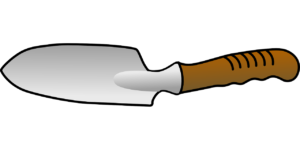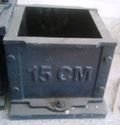Compressive strength: –
Compressive strength of cement is the ability of the cement to withstand the compressive load. It helps to find out how much compressive load cement can take before failure. This is the most important property as cement is expected to withstand the desired compressive load.
Significance: –
The compressive strength of concrete is the most important and useful property. Cement is planned to withstand compressive strength. If it fails then it will ultimately fail the structure. Compressive strength tests give assurance to use.
Factors Affecting Compressive strength: –
- Water/cement ratio
- ingredients of cement
- Weather condition
- Age of Specimen
- Curing
- Shape and Size of Specimen
- Rate Of Loading
- Manner of mixing
Apparatus: –
Cube Testing Machine: – To test at what load specimen Fails

Weight Scale: – To weigh a sample

Trowel: – To even the surface of the block

Tray: – To mix Cement and water
Cube Mould: – 70.6mm x 70.6mm x 70.6mm size

Vibrating machine: – to remove air or voids in the block
Procedure: –
- Preparation of test specimens – Clean appliances shall be used for mixing and the temperature of water and that of the test room at the time when the above operations are being performed shall be 27 ± 2°C. Potable/distilled water shall be used in preparing the cubes.
- The material for each cube shall be mixed separately and the quantity of cement, standard sand and water shall be as follows: Cement 200 g and Standard Sand 600 g Water ((P/4)+3.0) percent of combined mass of cement and sand, where P is the percentage of water required to produce a paste of standard consistency.
- Place on a nonporous plate, a mixture of cement and standard sand. Mix it dry with a trowel for one minute and then with water until the mixture is of uniform colour. The quantity of water to be used shall be as specified in step 2. The time of mixing shall in any event be not less than 3 min and should the time taken to obtain a uniform colour exceed 4 min, the mixture shall be rejected and the operation repeated with a fresh quantity of cement, sand and water.
- Moulding Specimens – In assembling the moulds ready for use, treat the interior faces of the mould with a thin coating of mould oil.
- Place the assembled mould on the table of the vibration machine and hold it firmly in position by means of a suitable clamp. Attach a hopper of suitable size and shape securely at the top of the mould to facilitate filling and this hopper shall not be removed until the completion of the vibration period.
- Immediately after mixing the mortar in accordance with step 1 & 2, place the mortar in the cube mould and prod with the rod. Place the mortar in the hopper of the cube mould and prod again as specified for the first layer and then compact the mortar by vibration.
- The period of vibration shall be two minutes at the specified speed of 12000 ± 400 vibration per minute.
- At the end of vibration, remove the mould together with the base plate from the machine and finish the top surface of the cube in the mould by smoothing the surface with the blade of a trowel.
- Curing Specimens – keep the filled moulds in moist closet or moist room for 24 ± 1 hour after completion of vibration. At the end of that period, remove them from the moulds and immediately submerge in clean fresh water and keep there until taken out just prior to breaking.
- The water in which the cubes are submerged shall be renewed every 7 days and shall be maintained at a temperature of 27 ± 2°C. After they have been taken out and until they are broken, the cubes shall not be allowed to become dry.
- Test three cubes for compressive strength for each period of curing mentioned under the relevant specifications (i.e. 3 days, 7 days, 28 days)
- The cubes shall be tested on their sides without any packing between the cube and the steel plattens of the testing machine. One of the plattens shall be carried on a base and shall be self-adjusting, and the load shall be steadily and uniformly applied, starting from zero at a rate of 35 N/mm2/min.
Calculations: –
Compressive strength of cube= Crushing Load/Cross Section area of cube